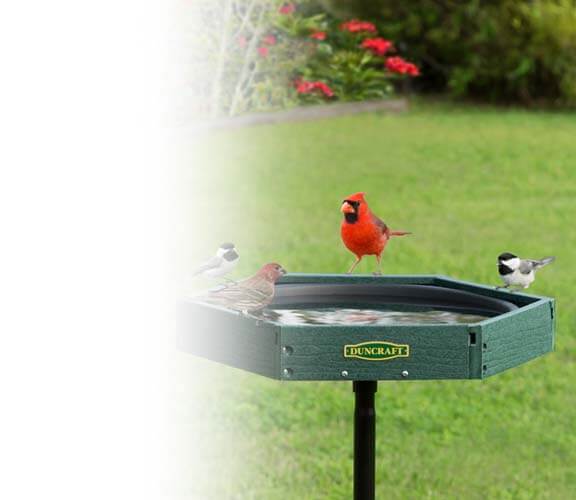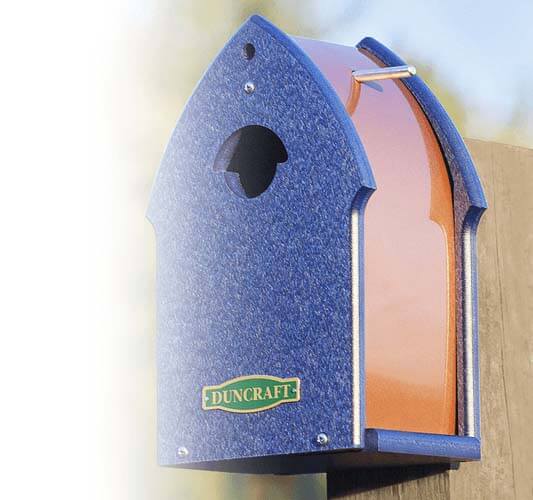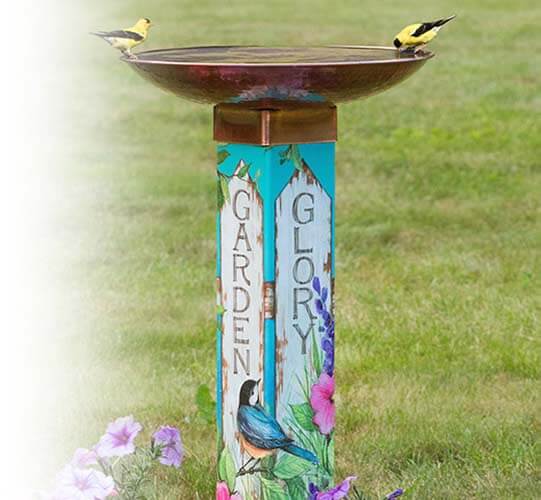- Log In
- Create Account
- Feeders
- All Bird Feeders
- Squirrel Proof Feeders
- Caged Bird Feeders
- Nyjer® Seed Bird Feeders
- Squirrel Resistant Feeders
- Duncraft Brand Feeders
- Hopper Bird Feeders
- Tube Bird Feeders
- Window Bird Feeders
- Suet and Block Feeders
- Hummingbird Feeders
- Oriole Bird Feeders
- Platform Feeders
- Fruit & Nut Feeders
- Bluebird Feeders
- Decorative Bird Feeders
- Pole-Mount Bird Feeders
- Foods
- Baths
- Houses
- Accessories
- Critters
- Gifts
- New
- Exclusives
- Sale
- eGift Certificates
- Gift Cards
- Seed-by-the-Month
- Customer Service
- Contact Us
- Home
Free Shipping on orders $99+ Use code DC99 in your shopping cart. Details
Free Shipping on orders over $99. Use code DC99 in your shopping cart. Details

Learn How to Help Migrating Birds
Orioles and other birds have started to migrate: Many birds migrate thousands of miles south for the cold winter months and within a matter of weeks, reach their destination. For example, Baltimore Orioles migrate as close as Florida as far away as South America for the winter, while our other native oriole, the Orchard Oriole, prefers to overwinter in South America and up into Mexico.
On the other hand, bluebirds are considered partial migrants and only migrate a short distance in order to seek abundant food sources. Bluebirds have also been known to stay in the same yard year-round, to the delight of the birding enthusiasts who live there.
Yet the bright red Northern Cardinal is a welcome year-round resident of North America and a common visitor in many backyards across the country.
What birds are going to stay around? Now that we know not all of the birds in our yard are going to migrate, what birds can we expect to stay around? The Northern Cardinal, as we mentioned above, and possibly bluebirds.
Woodpeckers and nuthatches remain in the same habitat and goldfinches, too, although their plumage changes from bright yellow to greenish yellow. Although, if you look for their contrasting black and white wingbars, then you’ll know whether or not the goldfinches are still in your yard.
You can even look forward to your cold weather visitors, including irruptive juncos with sporadic visits from Pine Siskins, Pine and Evening Grosbeaks.
How can we help the birds, like orioles, that are migrating now? Here are three ways to help.
1. Shut your lights off at night. Doing this prevents birds from getting confused by the "light pollution" we create and wasting precious energy.
Most birds migrate at night, using the stars as a compass. By eliminating excess light, it removes the possibility birds could exhaust the precious little energy they have remaining until they reach their next stopover, allowing them to travel safely while managing their energy.
Here are three easy things you can do to protect migrating birds from light pollution at night:
- Turn off your lights when you leave a room.
- Close the curtains when you’re in a room with the lights on.
- Position your outdoor lights downward-facing to reduce glare.
If you’re already conscientious about turning lights off and saving energy, you may be pleasantly surprised to learn that this reduces light pollution for birds.
All these small steps add up and reduce light pollution for birds, allowing them to reach their destination safely and in good time without wasting any energy.
"Many birds that migrate during the night—the Blackburnian [Warbler] included—use the stars and moon to help guide their way," according to Audubon, "but now that the landscape below them twinkles with artificial light, birds can easily be confused."
Michael Mesure, a volunteer from the Fatal Light Awareness Program bird protection organization, known as FLAP, elaborated on this idea. "Many of the birds found overnight had fallen to the ground exhausted after becoming disoriented and fluttering in front of illuminated windows."
2. Add Bird-Safe decals to your windows. "Birds need our help now more than ever," according to the American Bird Conservatory. "In addition to the ongoing threat of loss of habitat that is becoming magnified by global warming, millions of birds are directly killed due to a number of different human-related causes."
"Scientists estimate that 300 million to 1 billion birds die each year from collisions with buildings."
How can you help migrating birds on their long journey south? Start by making your windows visible to birds. Millions of birds die each year when they fly into the reflection of sky, clouds and trees they see in our windows.
You can save your share of songbirds by applying our translucent ultraviolet decals to the outside of your windows. Birds see ultraviolet light and the UV coating acts like a stop sign—birds see the blue shape and veer off to the side, while your view stays clear and unobstructed.
Shop window strike decals and more at duncraft.com today.
3. Keep your cat indoors. When cats are outdoors, their instincts kick in. Keep your cats indoors and provide any migrating birds a chance for survival. Even well-fed birds are a threat to songbirds.
It's worth noting, "Another 1 million [birds] may die each day from attacks by cats left outdoors."
Think of the beautiful birds you’ve seen in your own yard, do you really want to take the chance?
"Though backyard birdwatchers may worry that the flurry of bird activity in their yard has come to a standstill by summer's end," according to Everything Birds, "that couldn’t be further from the truth."
"As fall migration begins in late August, your backyard can continue to be a hub of activity. Simply make your backyard a stopover site for fall's migrating birds."
Also, consider feeding black oil sunflower seed in your feeders. It's the #1 seed preferred by the greatest number of birds. It's quick and easy to feed and provides birds with a high-energy treat to sustain their energy until they reach their next stopover.
Give us a call with any questions — we’re available Monday–Friday from 9:00am–5:00pm EST at 1-800-763-7878. Happy Birding!


























